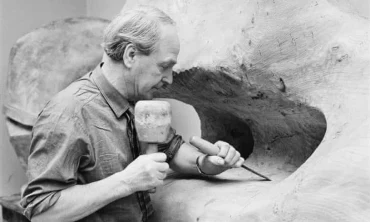
- 357 Lê Hồng Phong, P.2, Q.10, TP.HCM
- Hotline 1: 1900 7060
Hotline 2: (028) 3622 8849
IELTS Reading: Architecture in Britain – Phân tích từ vựng
Hôm nay, mời các các bạn một số từ vựng liên quan đến bài đọc trong đề thi IELTS bên dưới, mong các bạn có thể bổ sung thêm những từ vựng mà mình chưa biết đến một cách hiệu quả!
Architecture in Britain
From the Middle Ages to the 20th century, what are the influences and movements that have shaped the changing face of British architecture?
Architecture is about evolution, not revolution. It used to be thought that once the Romans pulled out of Britain in the fifth century, their elegant villas, carefully-planned towns and engineering marvels like Hadrian's Wall simply fell into decay as British culture was plunged into the Dark Ages. It took the Norman Conquest of 1 066 to bring back the light, and the Gothic cathedral-builders of the Middle Ages played an important part in the revival of British culture. However, the truth is not as simple as that. Romano-British culture—and that included architecture along with language, religion, political organisation and the arts—survived long after the Roman withdrawal. And although the Anglo-Saxons had a sophisticated building style of their own, little survives to bear witness to their achievements as the vast majority of Anglo- Saxon buildings were made of wood.
Even so, the period between the Norman landing at Pevensey in 1066 and the day in 1485 when Richard III lost his horse and his head at Bosworth, ushering in the Tudors and the Early Modern period, marks a rare flowering of British buildings. And it is all the more remarkable because the underlying ethos of medieval architecture was "fitness for purpose". The great cathedrals and parish churches that lifted up their towers to heaven were not only acts of devotion in stone; they were also fiercely functional buildings. Castles served their particular purpose and their battlements and turrets were for use rather than ornament. The rambling manor houses of the later Middle Ages, however, were primarily homes, their owners achieving respect and maintaining status by their hospitality and good lordship rather than the grandeur of their buildings. In a sense, the buildings of the 16th century were also governed by fitness for purpose—only now, the purpose was very different. In domestic architecture, in particular, buildings were used to display status and wealth.
This stately and curious workmanship showed itself in various ways. A greater sense of security led to more outward-looking buildings, as opposed to the medieval arrangement where the need for defence created houses that faced inward onto a courtyard or series of courtyards. This allowed for much more in the way of exterior ornament. The rooms themselves tended to be bigger and lighter—as an expensive commodity, the use of great expanses of glass was in itself a statement of wealth. There was also a general move towards balanced and symmetrical exteriors with central entrances. With the exception of Inigo Jones (1573-1652), whose confident handling of classical detail and proportion set him apart from all other architects of the period, most early 17th century buildings tended to take the innocent exuberance of late Tudor work one step further. But during the 1640s and 50s the Civil War and its aftermath sent many gentlemen and nobles to the Continent either to escape the fighting or, when the war was lost, to follow Charles II into exile. There they came into contact with French, Dutch and Italian architecture and, with Charles's restoration in 1 660, there was a flurry of building activity as royalists reclaimed their property and built themselves houses reflecting the latest European trends. The British Baroque was a reassertion of authority, an expression of absolutist ideology by men who remembered a world turned upside down during the Civil War. The style is heavy and rich, sometimes overblown and melodramatic. The politics which underpin it are questionable, but its products are breathtaking.
The huge glass-and-iron Crystal Palace, designed by Joseph Paxton to house the Great Exhibition of 1851, shows another strand to 19th century architecture—one which embraced new industrial processes. But it wasn't long before even this confidence in progress came to be regarded with suspicion. Mass production resulted in buildings and furnishings that were too perfect, as the individual craftsman no longer had a major role in their creation. Railing against the dehumanising effects of industrialisation, reformers like John Ruskin and William Morris made a concerted effort to return to hand-crafted, pre-industrial manufacturing techniques. Morris's influence grew from the production of furniture and textiles, until by the 1880s a generation of principled young architects was following his call for good, honest construction.
The most important trends in early 20th century architecture simply passed Britain by. Whilst Gropius was working on cold, hard expanses of glass, and Le Corbusier was experimenting with the use of reinforced concrete frames, we had staid establishment architects like Edwin Lutyens producing Neo-Georgian and Renaissance country houses for an outmoded landed class. In addition, there were slightly batty architect- craftsmen, the heirs of William Morris, still trying to turn the clock back to before the Industrial Revolution by making chairs and spurning new technology. Only a handful of Modern Movement buildings of any real merit were produced here during the 1920s and 1930s, and most of these were the work of foreign architects such as Serge Chermayeff, Berthold Lubetkin and Erno Gold-finger who had settled in this country.
After the Second World War the situation began to change. The Modern Movement's belief in progress and the future struck a chord with the mood of post-war Britain and, as reconstruction began under Attlee's Labour government in 1 945, there was a desperate need for cheap housing which could be produced quickly. The use of prefabricated elements, metal frames, concrete cladding and the absence of decoration—all of which had been embraced by Modernists abroad and viewed with suspicion by the British—were adopted to varying degrees for housing developments and schools. Local authorities, charged with the task of rebuilding city centres, became important patrons of architecture. This represented a shift away from the private individuals who had dominated the architectural scene for centuries.
Since the War it has been corporate bodies like these local authorities, together with national and multinational companies, and large educational institutions, which have dominated British architecture. By the late 1 980s the Modern Movement, unfairly blamed for the social experiments implicit in high-rise housing, had lost out to irony and spectacle in the shape of post-modernism, with its cheerful borrowings from anywhere and any period. But now, in the new Millennium, even post-modernism is showing signs of age. What comes next?
Questions 27 - 31
Choose the correct letter, A, B, C or D.
Write your answers in boxes 27—31 on your answer sheet.
27 After Romans left Britain,
A. their achievements were neglected.
B. their cultural legacy endured.
C. there was an abrupt culture change.
D. their buildings were well protected.
28 Medieval architecture aspired all above to be
A. immense.
B. useful.
C. decorative.
D. durable.
29 Which of the following architectural features characterize the 16th-century architecture in Britain?
A. They faced inward.
B. They had plain exteriors.
C. They had small windows.
D. They used symmetry in architecture.
30 How did the 17th-century British buildings come to be influenced by styles from continental Europe?
A. Fugitives brought ideas from continental Europe back to Britain.
B. British craftsmen went to work in other countries.
C. Monarchs encouraged cultural contact with other countries.
D. Buildings were restored by architects in European countries.
31 What drove building designs after the Second World War?
A. Conservatism
B. a housing shortage
C. foreign architecture
D. wealthy patronage
Questions 32 - 40
Complete the sentences below.
Choose NO MORE THAN THREE WORDS from the passage for each answer.
Write your answers in boxes 32-40 on your answer sheet.
32 Because most Anglo-Saxon buildings were constructed from.................... , few of them have survived.
33 The owners of medieval manor houses in Britain earned their reputation through their....................and elegance.
34 The 16th-century building was designed to show evidence of.................... and
35 In the 16th century, the use of glass was fashionable, even though it was an...........
36 Indigo Jones was particularly skillful in designing architecture in the.................... style.
37 Though William Morris designed................ and.................... , his emphasis on hand-crafting influenced architects.
38 In the early 20th century, architects like....................were producing conservative designs.
39 Before the Second World War, modern movement buildings in Britain were mainly designed by.....................
40 After the Second World War, much architecture was commissioned by.................... rather than private individuals.
PHÂN TÍCH TỪ VỰNG:
Exp: “The new telescope has helped us to understand more about the evolution of the universe.”
Exp: “These are among the most sophisticated weapons in the world.”
Exp: “He’s fiercely committed to excellence in education.”
Exp: “We were struck by the silent grandeur of the desert.”
Exp: “The tunnels were dug in medieval times as an escape route.”
Exp: “Royalists wanted former king Zahir Shah to return as a unifying head of state.”
Exp: “This is perhaps the most gorgeous reassertion of femininity seen in fashion for years.”
Exp: “It's a totalitarian regime that reduces and dehumanizes its population.”
Exp: “The earthquake survivors are in desperate need of help.”
Exp: “Our school is using prefabricated buildings for extra classrooms.”
THƯ VIỆN LIÊN QUAN

Reading là một trong bốn phần thi bắt buộc của bài thi IELTS, đây cũng được xem là phần thi thử thách nhất để chinh phục được band điểm cao. Hãy...

Bài viết cung cấp cho đọc giả Bài tập Reading part 3 - Chủ đề: Why fairy tales are really scary tales - Có đáp án

Bài viết cung cấp cho đọc giả Bài tập Reading part 2 - Chủ đề: The Desolenator: producing clean water - Có đáp án

Bài viết cung cấp cho đọc giả Bài tập Reading part 1 - Chủ đề: Henry Moore (1898-1986) - Có đáp án
Hoặc gọi ngay cho chúng tôi:
1900 7060
 | Chính sách bảo mật thông tin | Hình thức thanh toán | Quy định chung
| Chính sách bảo mật thông tin | Hình thức thanh toán | Quy định chung
Giấy chứng nhận đăng ký doanh nghiệp số 0310635296 do Sở Kế hoạch và Đầu tư TPHCM cấp.
Giấy Phép hoạt động trung tâm ngoại ngữ số 3068/QĐ-GDĐT-TC do Sở Giáo Dục và Đào Tạo TPHCM cấp